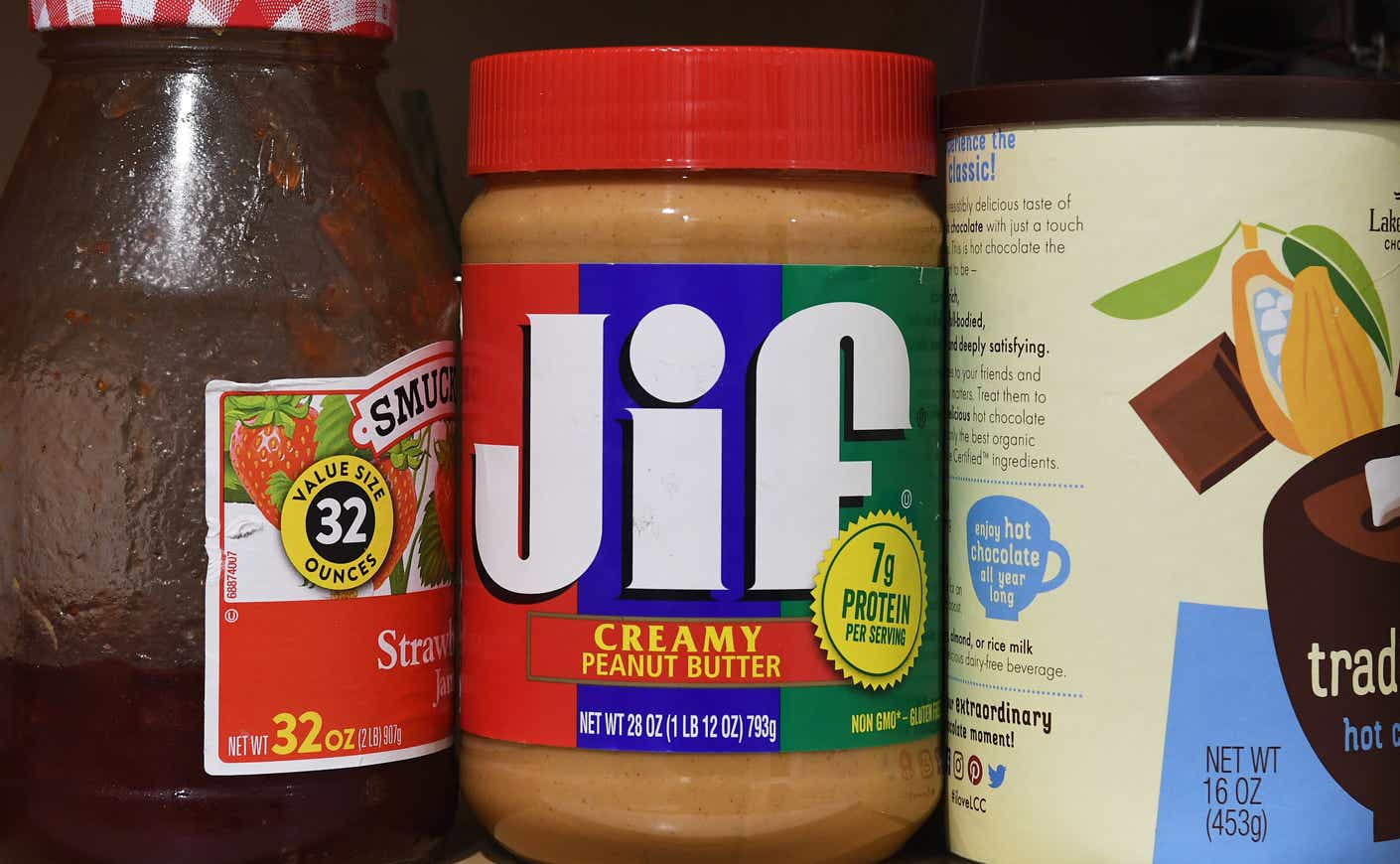Time to head to your pantry and check that jar of Jif: Some of the peanut butter sold by the company has been recalled because of a salmonella outbreak. We’re breaking down what to know about the recall and outbreak, how to know if your Jif is from the recalled lot, and salmonella symptoms to look out for (in case you already ate a bit from of the recalled batch).
Why was Jif peanut butter recalled?
J.M. Smucker Co., makers of the popular peanut-butter brand, issued a voluntary recall last week after 14 people across 12 states reported salmonella poisoning. Two of those people have been hospitalized, NPR reports.
The FDA says a plant in Lexington, Kentucky that produces Jif peanut butter is likely the source of the outbreak. Several dozen of the products, which include Jif’s creamy peanut butter, and its reduced-fat and no-sugar added options, were recalled.
How to check if your peanut butter’s been recalled
To see if your peanut butter’s part of the recall, look for the lot code on the back of the jar. It should be located under the “Best If Used By” date.
If the first four digits of the code are between 1274 and 2140 and if the next three numbers are 425 (which distinguishes it as having been produced at the contaminated plant) do not consume the product, the FDA warns. If you’ve eaten from the jar and feel ill, the agency recommends contacting a healthcare provider. They also suggest sanitizing any surfaces or utensils that may have come into contact with the product.
Salmonella symptoms to look out for if you ate recalled Jif peanut butter
Salmonella is a bacteria that can cause an illness known as salmonellosis. According to the FDA, most people will begin to develop symptoms 12 to 72 hours after they’ve been infected. Common symptoms include diarrhea, fever, and abdominal cramps. High fever, headaches, lethargy, a rash, and blood in the urine or stool is seen in more severe cases.
The U.S. Centers for Disease Control and Prevention estimate that about 450 people die each year from salmonellosis.









